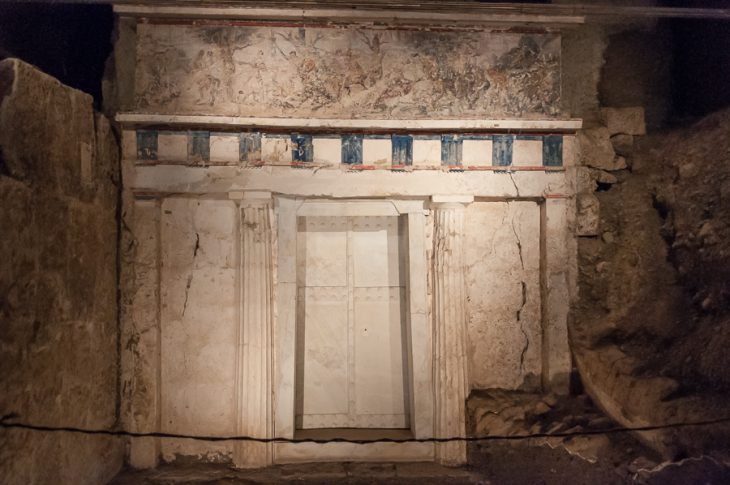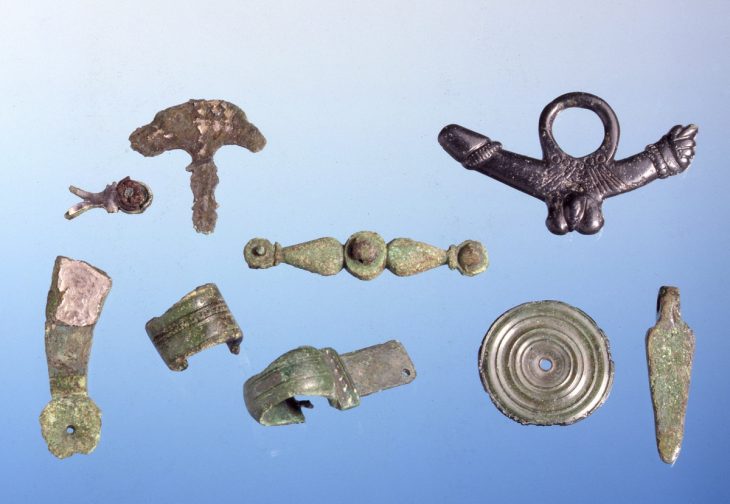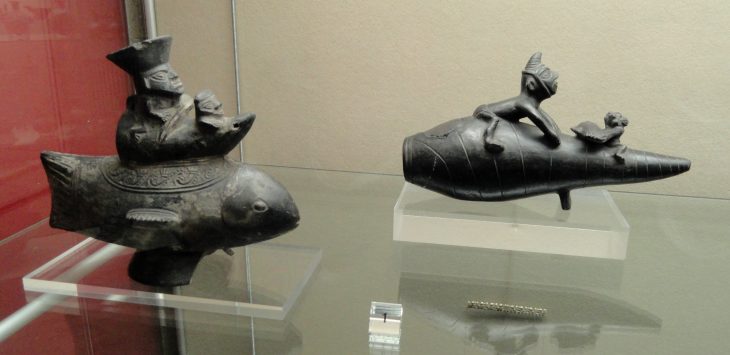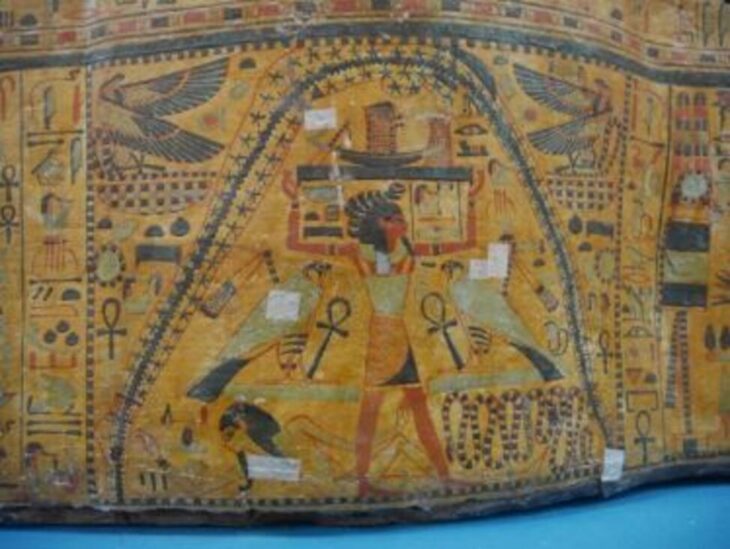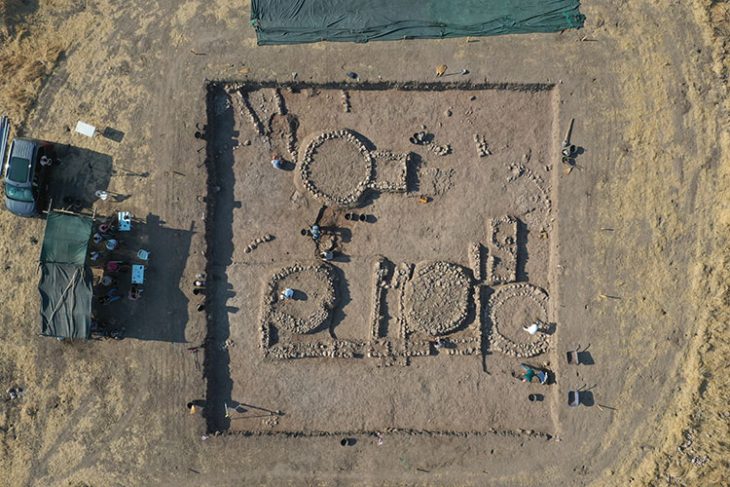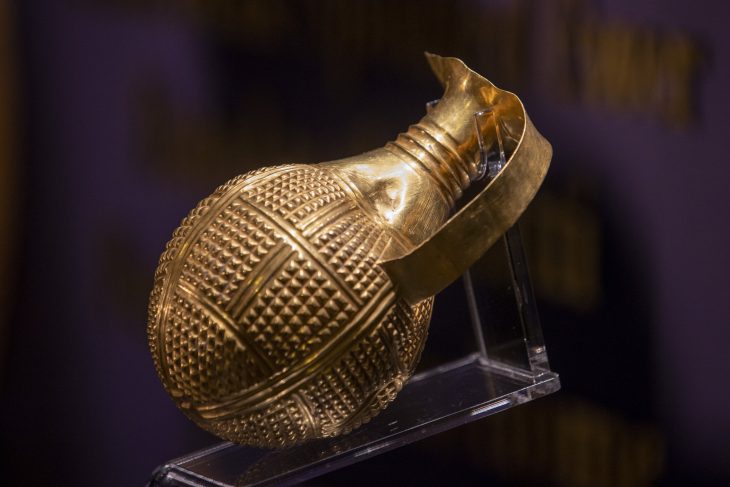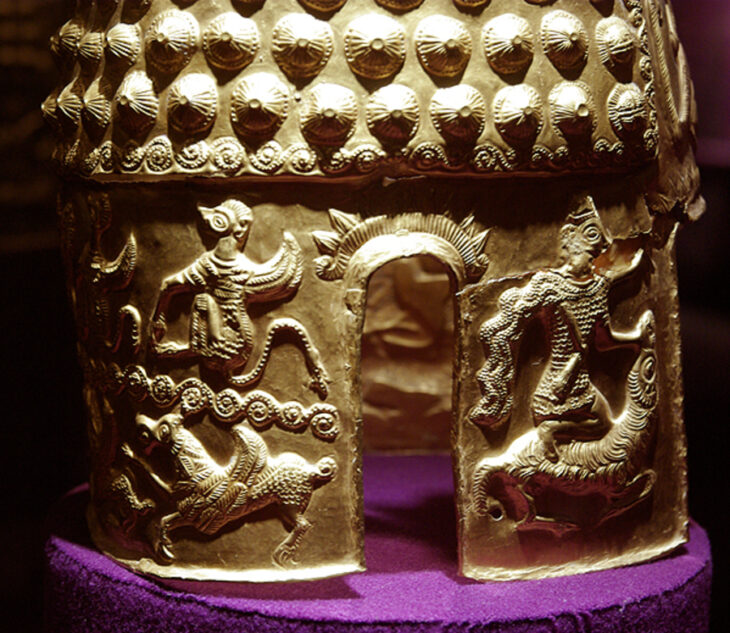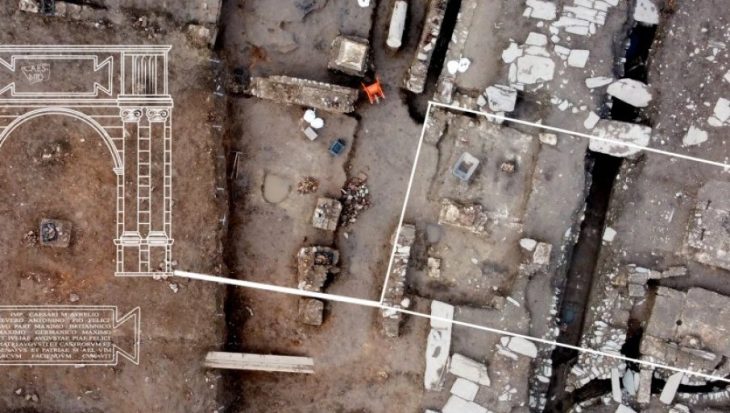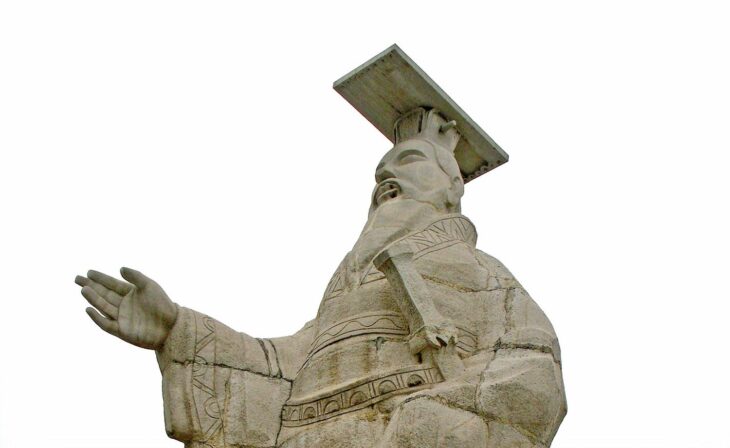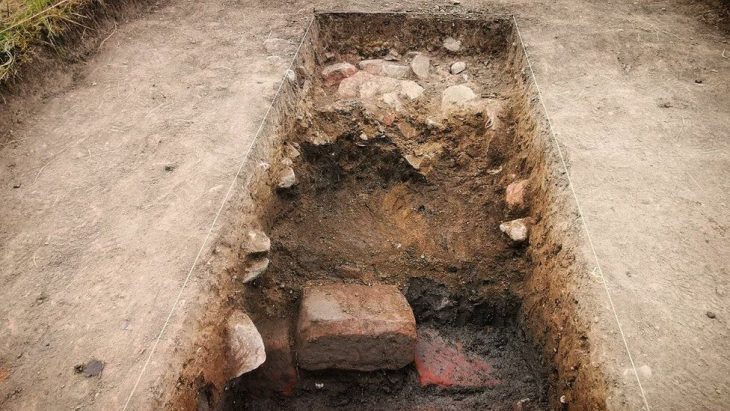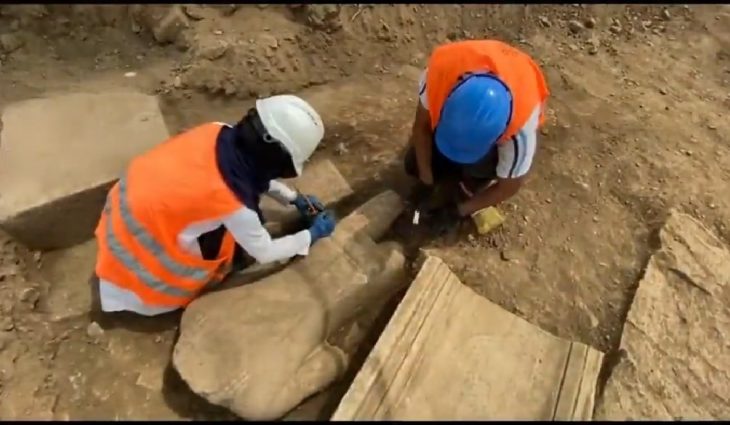The new research shows that the unique leather armor found in a horse rider’s tomb in Northwest China was made in the Neo-Assyrian Empire between the 6th and 8th centuries BC.
The leather scale armor was found in 2013 in a tomb at Yanghai near the modern-day city of Turfan in Northwest China.
This unprecedented discovery, which survived the millennia due to the area’s extremely arid climate, provided the research team led by Patrick Wertmann from the University of Zurich’s Institute of Asian and Oriental Studies with new insights into the spread of military technology during the first millennium BCE.
Scale armors protect warriors’ vital organs like an extra layer of skin while allowing them to move freely. Small shield-shaped plates were stacked in horizontal rows and sewed onto a backing to make the armors. Armors were extremely valuable because of the expensive materials and time-consuming construction process, and wearing them was considered a privilege of the elite. It was uncommon for them to be buried with their owners.
The researchers used radiocarbon dating to determine the age of the armor to between 786 and 543 BCE. According to the team, a total of 5,444 small and 140 big scales was originally used for the armor; together with leather laces and lining adding up to a total weight of 4-5 kg.
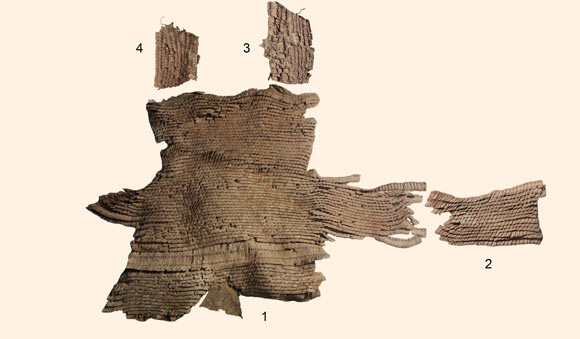
The armor is shaped like a waistcoat and protects the front of the torso, hips, sides, and lower back of the body. It is easy to put on without the assistance of another person and suits persons of various heights.
“The armor was professionally produced in large numbers,” says Patrick Wertmann. With the increasing use of chariots in Middle Eastern warfare, a special armor for horsemen was developed from the 9th century BCE. These armors later became part of the standardized equipment of military forces of the Neo-Assyrian Empire, which extended from parts of present-day Iraq to Iran, Syria, Turkey, and Egypt.
While there is no direct parallel to the 2,700-year-old armor in the whole of Northwest China, there are some stylistic and functional similarities to a second contemporary armor of unknown origin held by the Metropolitan Museum of Art in New York (the Met). The stylistic correspondence but functional specifics make the two armors appear as outfits for different units of the same army: the Yanghai armor possibly for light cavalry, the MET armor perhaps for heavy infantry.
The researchers suggest that both leather scale armors were manufactured in the Neo-Assyrian Empire.
It is unclear whether the Yanghai armor belonged to a foreign soldier working for the Assyrian forces who brought it back home with him, or whether the armor was captured from someone else who had been to the region.
“Even though we can’t trace the exact path of the scale armor from Assyria to Northwest China, the find is one of the rare actual proofs of West-East technology transfer across the Eurasian continent during the early first millennium BCE,” says Wertmann.
The research appears in Quaternary International.
Source: University of Zurich
Cover Photo: Wikipedia



